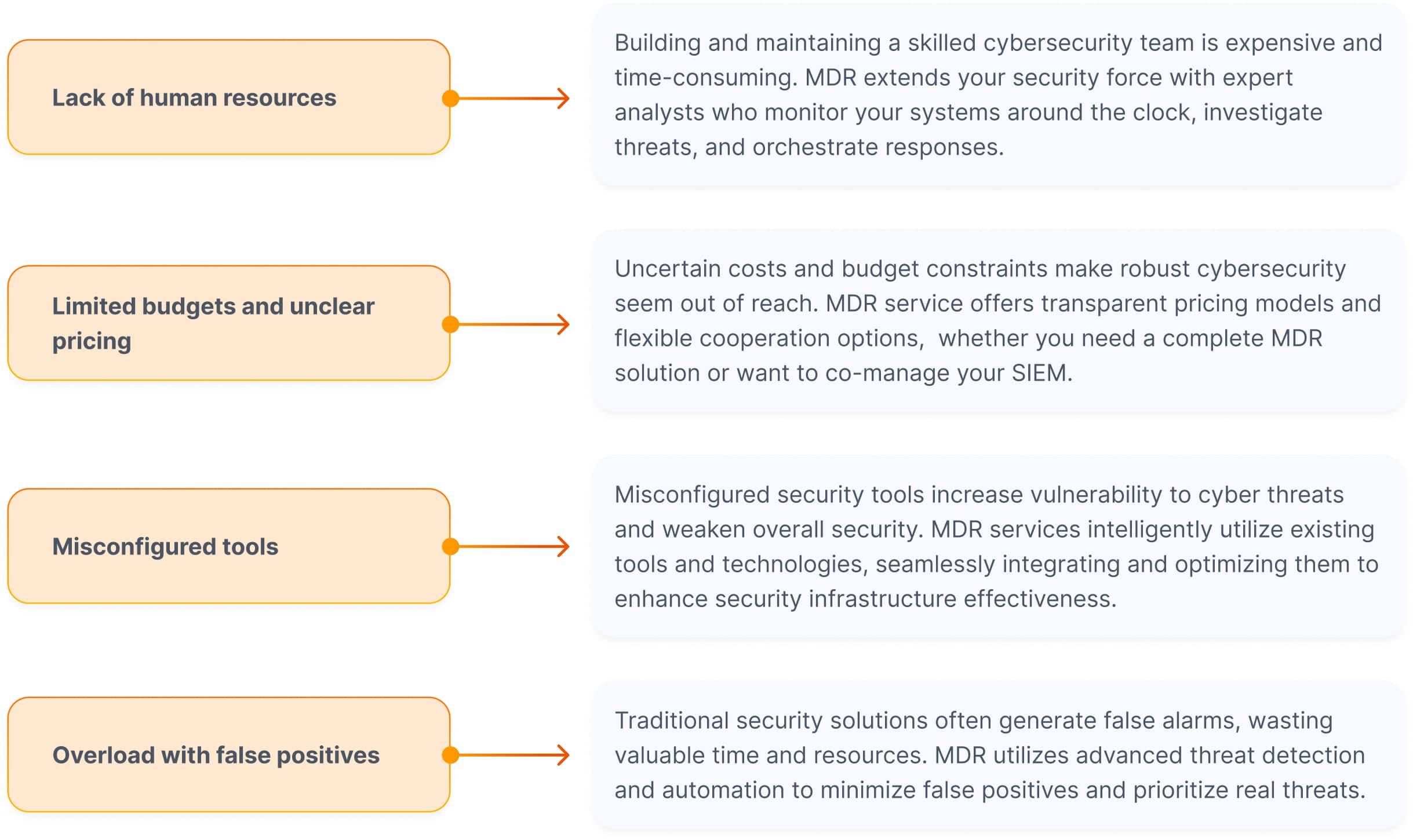Managed Detection and Response Buyer’s Guide
This MDR Buyer's Guide is your essential resource for choosing the right MDR provider. It provides vendor-agnostic expert insights to help you make informed decisions.
CISOs, IT Directors, SMB owners, and Compliance Officers:
This guide equips you to choose the perfect MDR partner, safeguarding your data and business operations.
MDR Buyer's Guide
Uncover your security gaps
Identify the right MDR coverage
Evaluate detection and investigation capabilities
Evaluate the expertise of the team
Check the technology integration
Assess the response capabilities
Ensure the MDR service helps you stay compliant
Evaluate custom services
Get the MDR Buyer’s Guide for expert insights and practical tips on selecting the right MDR provider








